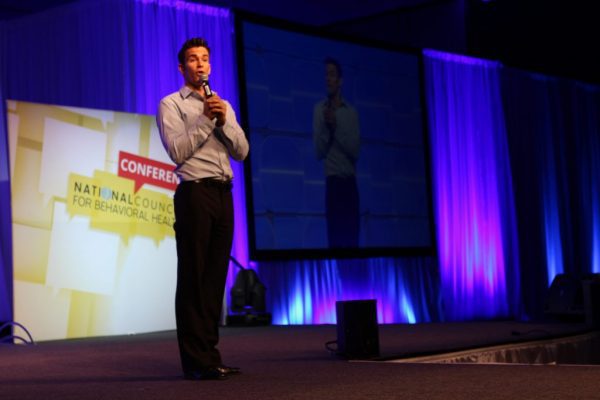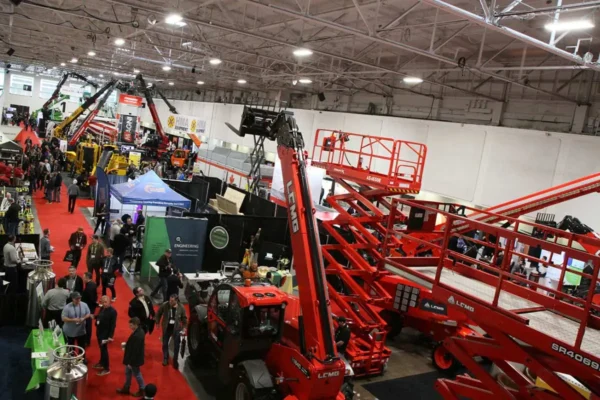Greetings, fellow professional emcees, virtual emcees, keynote speakers and corporate entertainers! It’s been a strange 18 months, to say the least, hasn’t it? There have been several moments where I wished there was a universal handbook to inform our next steps. Something like “A Beginner’s Guide to Hosting Events During a Plague” or “Pandemic Event Do’s and Don’ts.”
Unfortunately, there are no golden rules for virtual emcees during a worldwide pandemic—or a shortcut to satisfying clients amid a digital shift. But as the youngest of three siblings, I know that sometimes, some brotherly advice is all you need to take the next steps forward. So, for the next few minutes, consider me the virtual emcee brother you never had!
Virtual emcee to virtual emcee, I’m going to break down the 10 lessons I’ve learned from 200+ virtual events over the past 18 months to help you step up your game and crush your upcoming shows. Let’s get started!
1. Have Two Studio Options to Match Client Needs
Let me preface these next few tips with something I’ve quickly realized over the past several months: Client needs are much different now than they were in the past. Eighteen months ago, a performer with studio options was a bonus, not a requirement. However, with an emphasis on virtual events today, every virtual emcee should have studio options to meet potential client needs.
Some clients are simply looking for a virtual emcee who is confident, has a nice stage presence, and can articulate with the help of a microphone and teleprompter. Other clients are looking for a virtual emcee who can offer all the flashy features, from branded backdrops to custom sets. After 18 months, I’ve learned that the ideal situation is to have both a home studio and a professional studio.
2. Customize Your Tech (Even the Little Things)
With a home studio and professional studio secured, one of the best things you can do to elevate yourself as a virtual emcee is to customize your tech. With my customized tech, I can hear better and feel drastically more comfortable taking direction, especially during events that run for a few hours.
3. Build a Team You Can Trust
Over the past 18 months, I could not have served as a virtual emcee for more than 200 events if it had not been for the help of my team. No matter if you’ll be in a home studio or a professional studio, you should strive to build a team you can trust. Ideally, this team should include a videographer and engineer.
If you’re a seasoned virtual emcee, the videography side might be something you can handle or hire off the cuff. However, an engineer is someone you want to build a strong working relationship with. An engineer will guide you through your in-ear monitors to ensure you remain timely and inform you of what’s happening in the event chat, which is a massive component of virtual engagement.
4. Clarify Expectations for the Event
An incredibly important lesson I’ve learned throughout the pandemic is that you must clarify expectations with potential clients. Remember, virtual events are new for all of us—which means there’s a decent bit of gray area for both event producers and talent to navigate. Rather than sit back and hope for the best, define a client’s expectations before ever touching a contract.
Before moving forward, establish:
- Who is pushing out the virtual event stream
- Who is rolling the assets and canned footage
- Who is spotlighting, muting and unmuting speakers
Though you’d never be expected to manage B-roll and lighting when hosting an event on-site, these expectations can change while serving as a virtual emcee.
This brings me to my next point, which is how the definition of “hosting” has shifted over the past 18 months for virtual emcees. When a company asks you to host their event, do they mean in front of the camera or behind the scenes? Before signing a contract, learn if a company expects you to produce the event, to more clearly anticipate the hours you’ll need to put in.
That brings me to my next pandemic lesson…
5. Define Hours for Each Project
Once you know what role you’ll fulfill for a virtual event, always be sure to define the hours. Roughly how long will this event take for you to practice and perform? Will there be additional hours to shoot pre-recorded content or B-roll? Will you be utilizing a professional studio and need to work in hours of rehearsal time? If so, account for that time in your pricing!
Speaking of rehearsal time, trust me when I say that you normally need way more than you think. Remember, rehearsal for virtual events isn’t just talking through lines, but also working through all the technical elements of the show, like lighting and mic’ing. A one-hour event will need a minimum of two hours of rehearsal, and a two-hour event will likely require three or four hours of rehearsal.
Define the hours and charge accordingly, my friends!
6. Be Timely to Each Event
As a professional emcee, you likely pride yourself on your timeliness. Well, take that timeliness and kick it into overdrive for virtual events! Not to sound like the nagging big brother here, but you will definitely need more time than you think to prepare for virtual events compared to live events. Where you can show up right before doors open for a live event, that’s not the case for virtual.
If a virtual event starts at 9 a.m. and attendees are admitted into the virtual waiting room by 8:30 a.m., you need to be good to go by 8:30, not 9! This is because if you get to your studio by 8:20 and your mic doesn’t work, they’ll need to reboot the entire system to troubleshoot. This can take a considerable amount of time and ultimately set the event back, all because the emcee wasn’t ready.
Talk about unprofessional, right? Well, that leads me right into another bit of wisdom…
7. Maintain Professionalism (Even if You Think You’re Muted)
Virtual emcee to virtual emcee, I understand the urge to check your phone or let out the burp you’ve been holding for 25 minutes once the camera pans to somebody else. In the world of virtual events, never be so casual that you let your professionalism slip. Maintain an expert demeanor at all times, because a virtual emcee who lets one rip during the company tribute video is in big trouble.
Trust me, I understand that it can be tough to remember to mute and unmute yourself for the duration of a virtual event. We’re never in control of our belt packs at a live event, so managing that element solo can take some getting used to while virtual. My advice? Always err on the side of caution and never say or do anything you wouldn’t want to be caught on camera.
8. Remain Present and Actively Listen
In the same way you should remain professional for the entirety of a virtual event, always remain present. It takes a ton of energy to actively listen as a virtual emcee, but that’s why you were brought on board! Your whole job centers around actively taking in everything a speaker is saying and re-distilling that information to the audience.
In a virtual environment, it can be easy to get distracted by something in your home or professional studio. I urge you to find personal methods that help you lock in and focus on whatever is happening during a virtual event, from keynote speakers to panel discussions, to be able to find moments for engagement activation.
That brings me to my next point…
9. Build Moments for Engagement
Engagement is always important for a professional emcee, but as a virtual emcee, engagement is paramount. When attendees don’t share the same physical space, it takes a lot more effort to find and build moments for engagement. This is where your professionalism and active listening will really come into play as a virtual emcee.
Make it a point to reinstate key points from speakers to your audience as you segue from one bit to the next. Rather than simply commenting on how much you loved what a speaker had to say, encourage the audience to share one thing they learned in the chat. Remember, the chat is your strongest tool as a virtual emcee, so always use it to your advantage to activate engagement!
10. Always Make it Fun!
Last but certainly not least, always make your job as a virtual emcee fun! With more than 200 virtual events under my belt from the past 18 months, I can tell you this: People are tired. Zoom fatigue is real! Virtual attendees need to be jolted awake and drawn into your event, and that simply cannot happen without a little bit of fun.





















